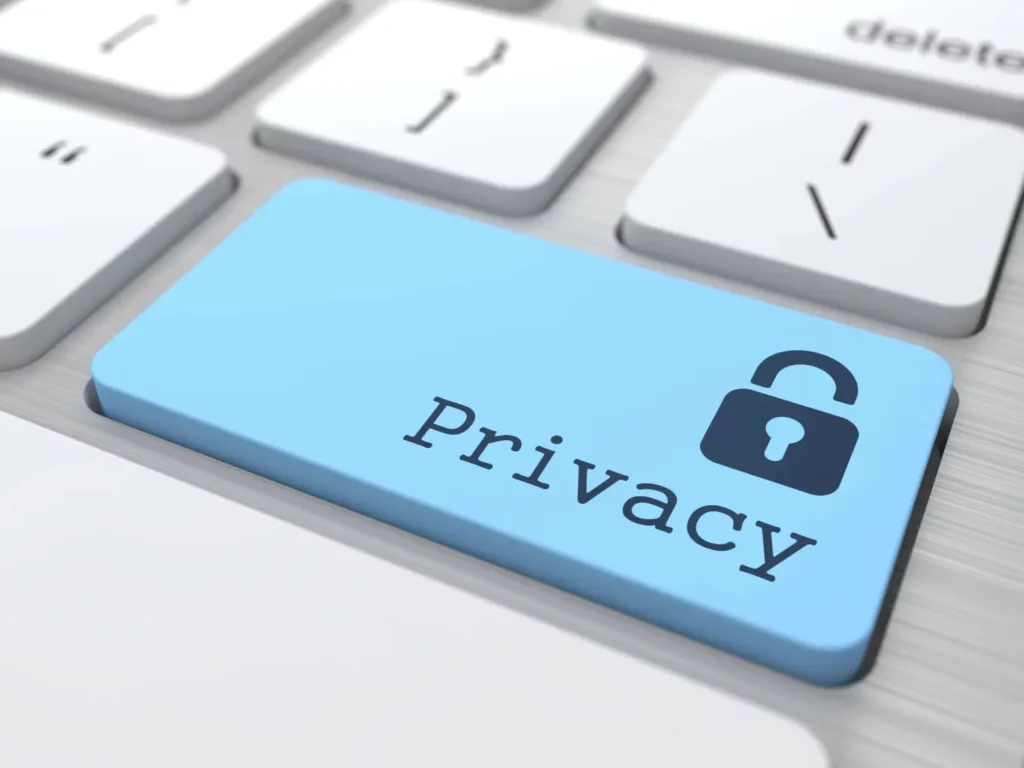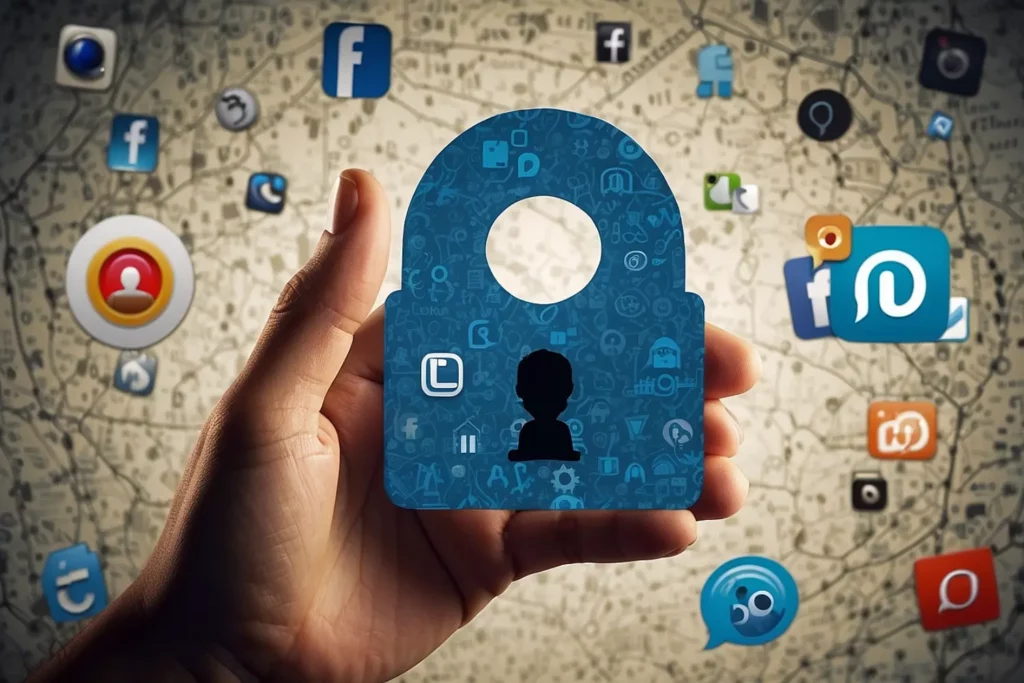
In today’s digital age, keeping our personal information private on social media is a growing concern for many. Privacy settings are there to help us control who can see and share our details.
This article will guide you through mastering those settings, ensuring your online footprint is as secure as possible. Stay safe with a few simple steps!
Table of Contents
1. Understanding Social Media Privacy Terms
Before adjusting your privacy settings, it’s important to read and understand the privacy policies of social media platforms. Knowing your rights and how your data will be used is essential for protecting your online privacy.

Reading and Understanding Privacy Policies
Privacy policies can seem like dense legal documents, but they hold the key to how social media platforms handle your personal data. Take the time to comb through these policies; it’s about protecting information that matters to you.
Look for sections on data usage, sharing practices, and rights you have over your content. This exercise isn’t just about ticking boxes — it’s an investment in online privacy control.
Understanding a platform’s privacy policy equips you with knowledge vital for managing your digital footprint. You’ll know exactly which parts of your profile are public and how to tweak settings for maximum privacy protection.
This clarity empowers you to craft a social media experience that safeguards your personal details while enjoying connectivity. Armed with this insight, let’s move forward towards knowing your rights on these platforms.
Knowing Your Rights
You have the right to control who sees your information on social media. It’s crucial to understand and assert these rights by familiarising yourself with each platform’s privacy policies.
Take charge of your online presence by adjusting privacy settings according to your preferences, managing biographical and account information, and carefully selecting who can view your content.
Don’t forget that the default audience for posts is a pivotal setting that needs configuration to ensure that only intended recipients can access personal data. Seize the opportunity to take ownership of your digital footprint and safeguard your privacy.
As you navigate through various social media platforms, remember that understanding and exercising your rights gives you the power to protect your personal data from potential misuse or unwarranted exposure.
2. Adjusting Your Privacy Settings
Customising your privacy settings on social media platforms is essential for protecting your personal information and managing who can see your posts and profile. By understanding site features and managing biographical information, you can ensure that only the people you want to see your content have access to it.
Site Features and Their Impact on Privacy
Social media platforms offer various site features that directly affect user privacy. Users can customise privacy settings to control who sees their information and posts, ensuring personal data protection.
It’s crucial to understand how these features impact individual privacy concerns and manage them effectively. Privacy settings customisation is essential for protecting account information, managing friends or connections, and controlling the audience for posts.
Moreover, social media platforms provide users with a range of options such as location sharing controls that impact geolocation privacy risks. By disabling location sharing and being mindful of location data on social media, individuals can strengthen their online security and protect their personal information from potential threats.
Managing Biographical and Account Information
After understanding how site features impact privacy, the next step is managing biographical and account information. This involves carefully controlling the personal details visible to others on social media platforms. Take the following steps to manage this information effectively:
- Update your profile with minimal personal information such as your first name and last initial.
- Avoid sharing sensitive details like your home address and phone number on your public profile.
- Regularly review and update privacy settings for biographical and account information to ensure that only necessary details are shared with specific audiences.
- Use privacy controls to limit who can see personal information, such as family photos and relationship status.
- Check the visibility of tagged content on your profile to prevent unwanted posts from appearing on your timeline.
- Verify that only trusted connections have access to detailed personal information by adjusting friend lists or contact settings accordingly.
- Choosing what friends or contacts can see
3. Protecting Your Location
Disable location sharing on your social media platforms to prevent others from knowing your exact whereabouts. Be aware of the privacy risks associated with geolocation and take necessary precautions.

Disabling Location Sharing
Disabling location sharing on social media platforms is crucial for protecting your privacy. Take control of your online presence by following these steps:
- Navigate to the settings section on your social media app or website.
- Locate the option for location services or geotagging and turn it off to prevent the platform from accessing your location.
- Check each post before sharing to ensure that location information is not attached.
- Be aware that some third – party apps may still be able to access your location data, so review app permissions carefully.
Being Aware of Geolocation Privacy Risks
Protecting your location information is crucial to safeguard your privacy on social media. Geolocation data sharing can expose your whereabouts and habits, making you vulnerable to stalking, theft, or cyber-attacks.
Take control by disabling location sharing in your app settings and being wary of geotagged posts. Stay informed about the potential risks associated with revealing your precise location online.
Consider how geolocation data can compromise your safety and security while using social media platforms. Keep in mind that managing this aspect of your privacy settings is essential for maintaining control over what you share with others online.
4. Best Practices for Social Media Privacy
When it comes to social media privacy, it’s important to be cautious of clickbait and think twice before clicking on any suspicious links. Posting photos wisely and being mindful of what you share can also help protect your privacy online.

Being Cautious of Clickbait
Clickbait is a common tactic used by websites and social media posts to manipulate users into clicking on sensationalised or misleading headlines. By being wary of clickbait, you can protect your privacy and avoid falling for deceptive content.
Clickbait often leads to sites that collect personal information or spread misinformation, so it’s crucial to stay vigilant.
Online safety experts advise not clicking on suspicious links or engaging with sensational headlines that seem too good to be true. Additionally, teaching kids about the dangers of clickbait early can help them develop healthy browsing habits and protect their privacy online.
Posting Photos Wisely
When posting photos on social media, consider who can see them by adjusting your privacy settings. You should be cautious about what kind of personal information is visible in the photos you share.
It’s important to remember that once a photo is online, it’s challenging to control who sees or shares it.
Being mindful about what you post and share will help protect your privacy and security while using social media platforms. By considering the potential impact of each photo before uploading, users can make informed decisions about their online presence and safeguard their personal information from unwanted exposure.
Being Mindful of What You Share
When it comes to social media privacy, being mindful of what you share is crucial. With the ability to control who sees your information, managing biographical and account details is fundamental.
The default audience setting for posts is a vital feature for optimising privacy settings. Protecting personal data by avoiding sharing risky information such as location data helps minimise privacy risks on social media platforms.
By practising caution with sharing content and being aware of who can see it, users can take control of their online privacy. Understanding the impact that shared content can have on privacy issues empowers individuals to make informed decisions about their online presence.
5. Strengthening Your Social Media Security
Improve your security by securing your home Wi-Fi network and devices, identifying and avoiding common Wi-Fi attacks, and securing email accounts. Take control of your social media privacy now!

Tips for Securing Home Wi-Fi Network and Devices
To secure your home Wi-Fi network and devices, follow these essential tips:
- Keep your Wi – Fi network password strong and unique, using a combination of letters, numbers, and special characters to enhance security.
- Regularly update the firmware on your router to protect against potential vulnerabilities and security breaches.
- Enable network encryption such as WPA2 or WPA3 to prevent unauthorised users from accessing your network.
- Turn off remote access to your router’s administration settings to safeguard against external tampering.
- Implement a firewall to create an additional layer of protection for your devices and home network.
- Disable the SSID broadcast feature on your router to make it less visible to potential intruders.
- Utilise MAC address filtering to control which devices can connect to your Wi-Fi network, adding an extra level of security.
- Consider setting up a separate guest network for visitors to keep your primary network secure from potential threats.
Identifying and Avoiding Common Wi-Fi Attacks
To protect your online security, it’s essential to be aware of and vigilant against common Wi-Fi attacks. Hackers can use techniques like phishing, man-in-the-middle attacks, and packet sniffing to gain access to your sensitive information when you’re connected to public Wi-Fi networks.
Always ensure that the Wi-Fi network you are connecting to is secure and encrypted. Additionally, consider using a virtual private network (VPN) when accessing public Wi-Fi networks for an extra layer of security.
Understanding the various types of Wi-Fi attacks and taking necessary precautions can significantly reduce the risk of falling victim to cyber threats on public or unsecured networks.
Securing Email Accounts
- Use a strong and unique password for each email account to prevent unauthorised access.
- Enable two – factor authentication to add an extra layer of security to your email login process.
- Regularly update your email client and operating system to ensure that security patches are in place.
- Avoid clicking on suspicious links or downloading attachments from unknown senders to prevent malware and phishing attacks.
- Be cautious when sharing personal information through emails, especially when responding to unsolicited requests.
Mastering privacy settings on social media platforms empowers users to control their online presence. Understanding privacy terms and adjusting settings are crucial steps in protecting personal data.
By being cautious and proactive, individuals can strengthen their security and safeguard their information from potential risks. Taking charge of social media privacy is an essential aspect of digital responsibility for all internet users.
FAQs
What are privacy settings on social media platforms?
Privacy settings are the tools that control who can see your information and how it’s shared on social media, helping you manage your data security and protect from privacy risks.
How do I master managing my privacy settings?
To master privacy management, regularly check and adjust your settings to ensure optimal protection, understand each platform’s features for social media privacy management, and stay informed about any changes.
Why is it important to optimise my social media security settings?
Optimising your security settings is crucial because it strengthens your defence against unauthorised access and reduces the chances of personal data misuse.
Can I fully prevent all privacy concerns on social media by adjusting my privacy settings?
While you can’t eliminate all risks, effective management of your privacy settings significantly decreases threats related to data security on social media platforms.
